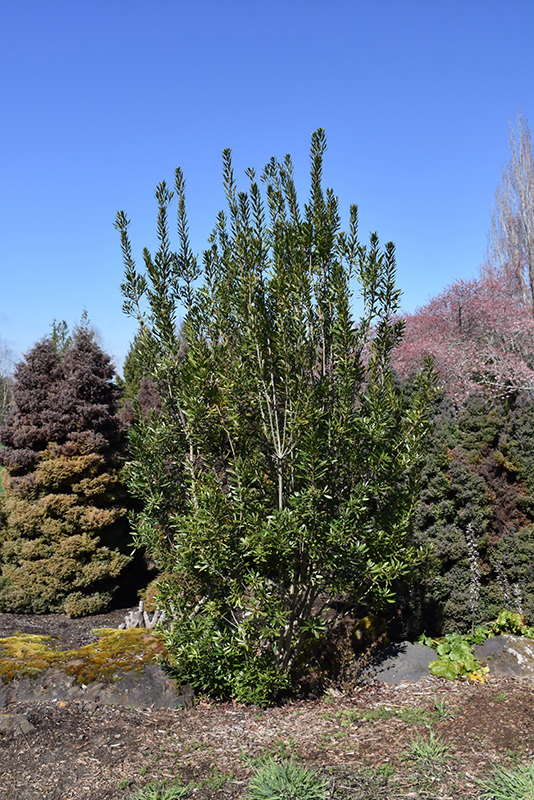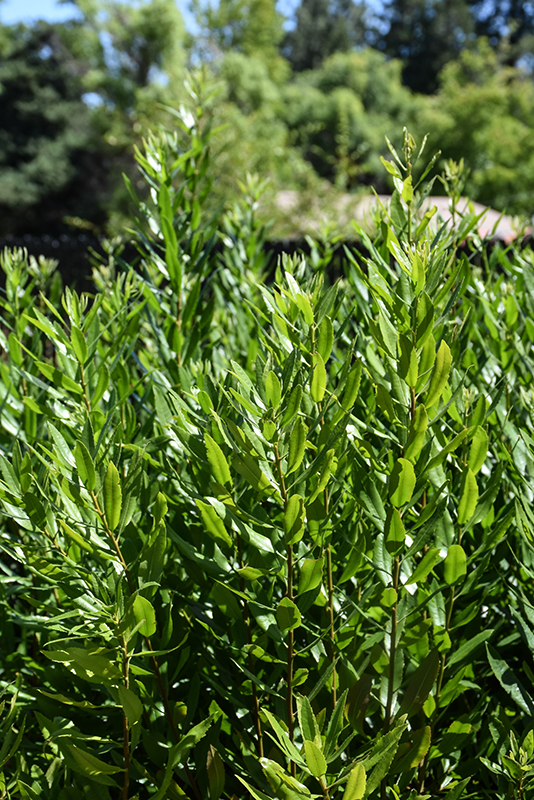Plant Finder
Height: 20 feet
Spread: 20 feet
Sunlight:
![]()
Hardiness Zone: 7a
Other Names: California Bayberry, California Wax Myrtle
Brand: Monrovia
Description:
A fast growing, evergreen native shrub that is ideal as a windbreak, screen or hedge; dense, glossy green foliage is accented with purple fruit in summer, a source of food for birds ; tolerant of salt spray and infertile soil;
Ornamental Features
Pacific Wax Myrtle is primarily grown for its highly ornamental fruit. It features an abundance of magnificent deep purple berries from mid summer to mid fall. It has attractive forest green evergreen foliage which emerges light green in spring. The glossy narrow leaves are highly ornamental and remain forest green throughout the winter.
Landscape Attributes
Pacific Wax Myrtle is a multi-stemmed evergreen shrub with a more or less rounded form. Its average texture blends into the landscape, but can be balanced by one or two finer or coarser trees or shrubs for an effective composition.
This shrub will require occasional maintenance and upkeep, and may require the occasional pruning to look its best. It is a good choice for attracting birds, bees and butterflies to your yard. Gardeners should be aware of the following characteristic(s) that may warrant special consideration;
- Suckering
Pacific Wax Myrtle is recommended for the following landscape applications;
- Accent
- Mass Planting
- Hedges/Screening
- General Garden Use
- Windbreaks and Shelterbelts
- Topiary
Planting & Growing
Pacific Wax Myrtle will grow to be about 20 feet tall at maturity, with a spread of 20 feet. It has a low canopy, and is suitable for planting under power lines. It grows at a fast rate, and under ideal conditions can be expected to live for approximately 30 years.
This shrub should only be grown in full sunlight. It is very adaptable to both dry and moist locations, and should do just fine under average home landscape conditions. It is not particular as to soil pH, but grows best in poor soils. It is somewhat tolerant of urban pollution. This species is native to parts of North America. It can be propagated by cuttings.





